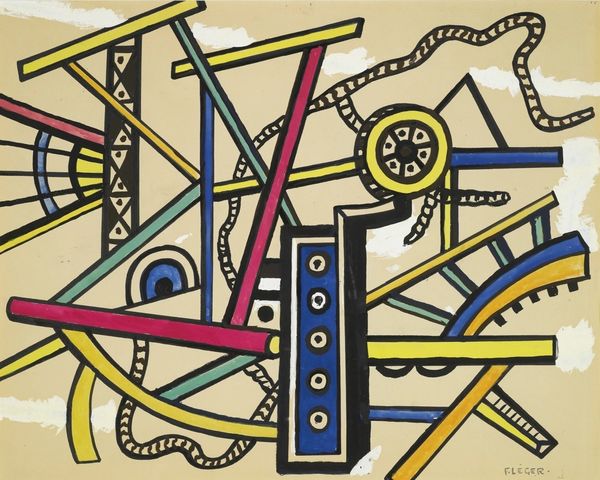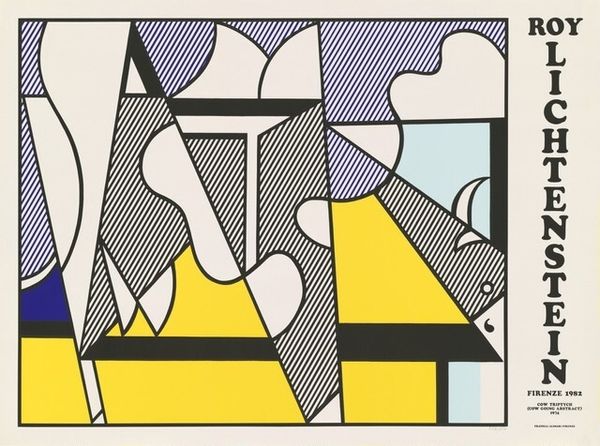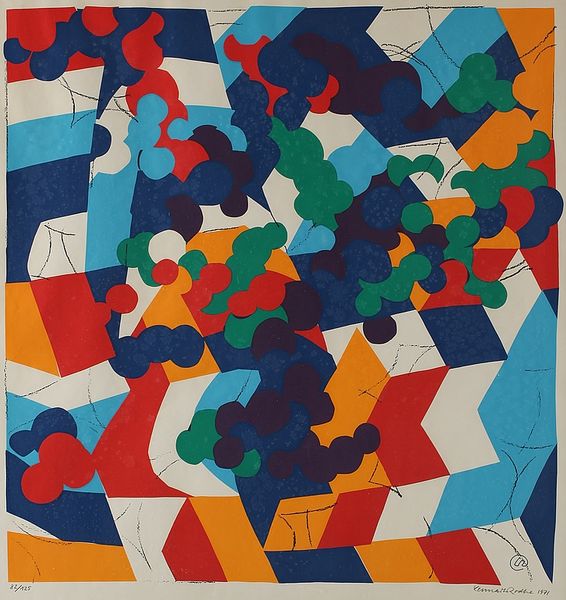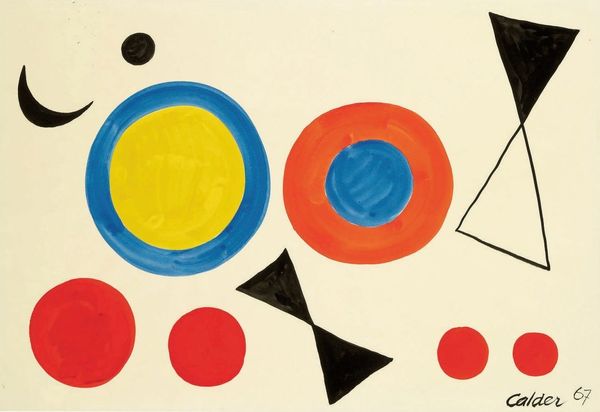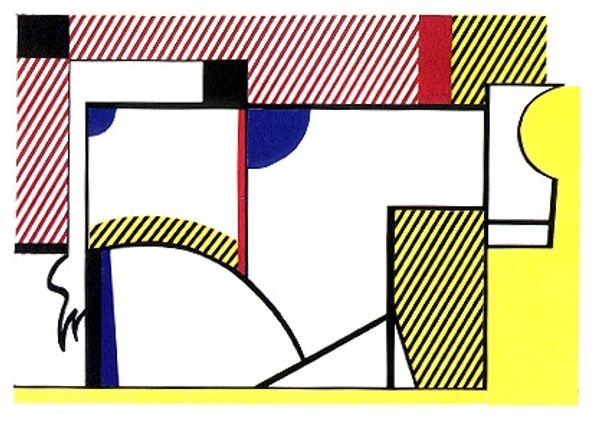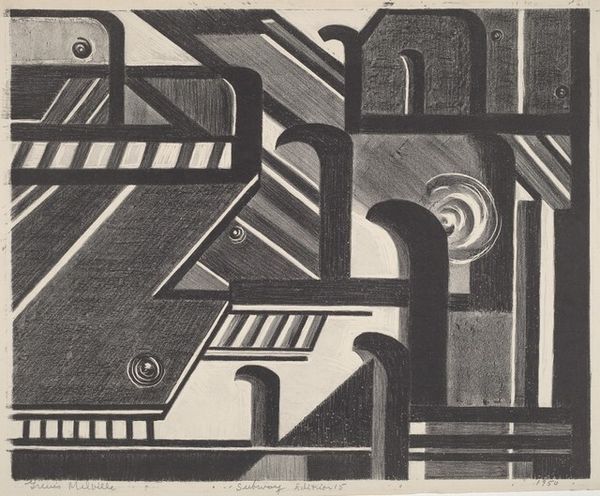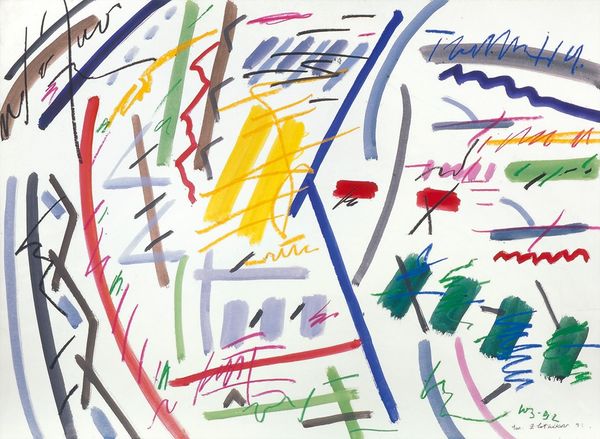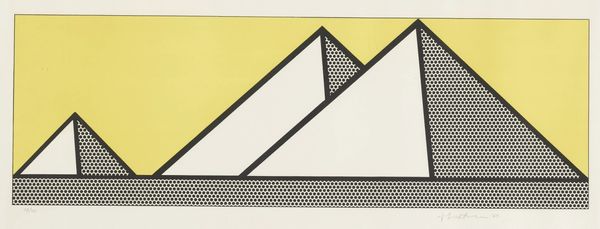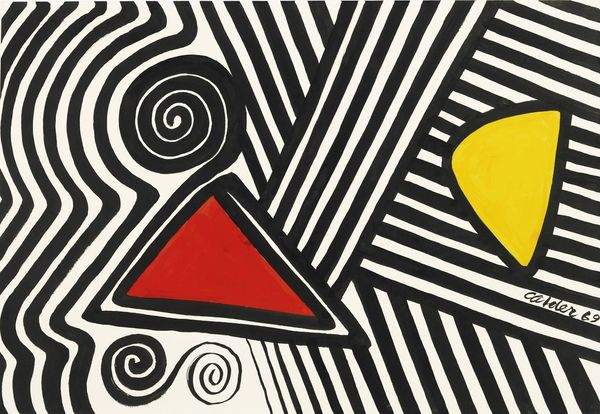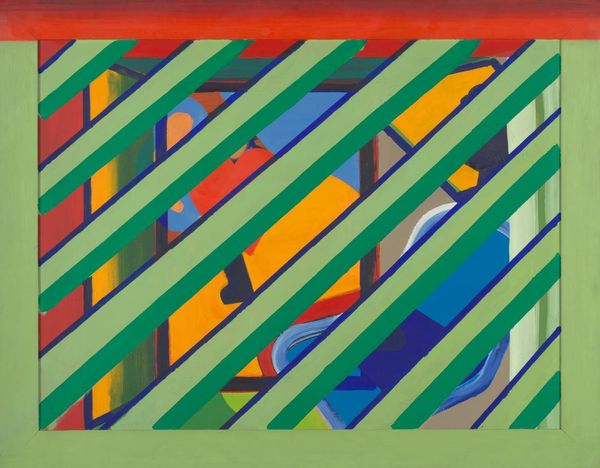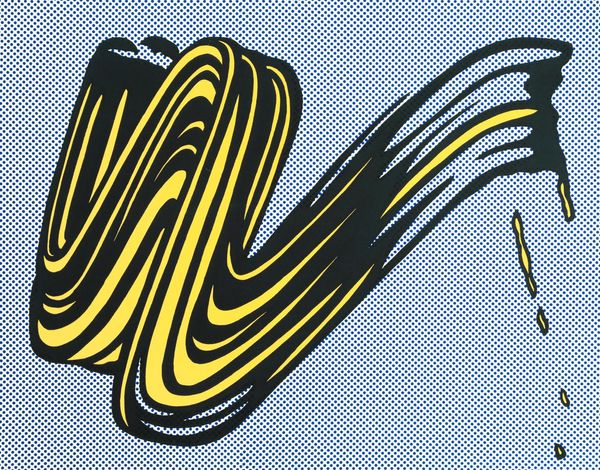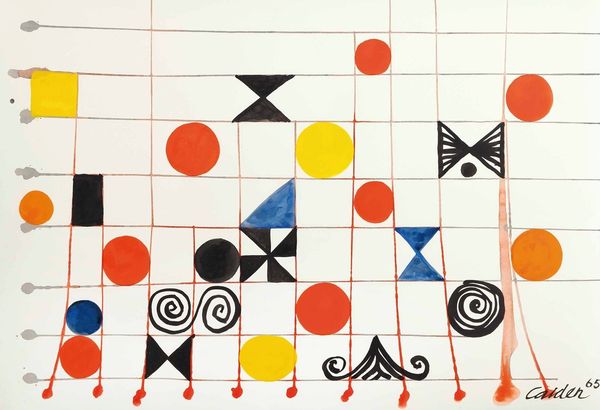
Copyright: Modern Artists: Artvee
Editor: Here we have Roy Lichtenstein's "Composition II" from 1996, a vibrant print with musical themes. I'm immediately drawn to the graphic quality and bold use of color. It almost feels like a deconstructed symphony. How do you interpret this work in the context of Lichtenstein's broader practice? Curator: That’s a great starting point. To understand "Composition II," we need to consider Lichtenstein’s dialogue with mass culture and abstraction. He is most famously associated with pop-art. Think about the original meaning of ‘Pop’ as being representative of consumer culture, but do we ever take the time to consider whether it reflects real people or the everyday lives of the working classes? Lichtenstein gives the viewer enough hints that, I think, are self-deprecating: “it looks just like the image it’s referencing but actually isn’t.” These images create new values of race and sexuality; a very capitalist endeavor if you consider he reproduced them to sell as commercial fine art. Now, how do you feel it speaks to geometric abstraction? Editor: Well, the clean lines, the musical staves, the solid blocks of primary color – it all feels very deliberate and ordered. But at the same time, there's a sense of playfulness in the overlapping elements and the suggestion of music. Do you think it succeeds in balancing the intellectual and the accessible? Curator: Precisely. Consider that geometric abstraction, at its heart, was meant to create visual accessibility of art to the common people as something functional. But what happens when you have something that on the one hand appears accessible but is in truth making profit of itself from being a simulation? This question reveals an inner power dynamic, especially given Lichtenstein’s artistic privilege as a white American artist at this time. Who can truly lay claim to something when that is the art piece itself? Editor: So, in a way, the accessibility of the work becomes a critical commentary on consumerism? Curator: Absolutely. It compels us to question the power structures embedded within seemingly simple artistic gestures and how these gestures translate into broader societal inequalities. What has it taught you about engaging critically with Pop Art? Editor: I've definitely learned to look beyond the surface appeal and consider the socio-political context. Curator: Indeed. The best way to truly listen to any piece is to understand what other narratives and influences can create different meanings of them in our daily life.
Comments
No comments
Be the first to comment and join the conversation on the ultimate creative platform.
